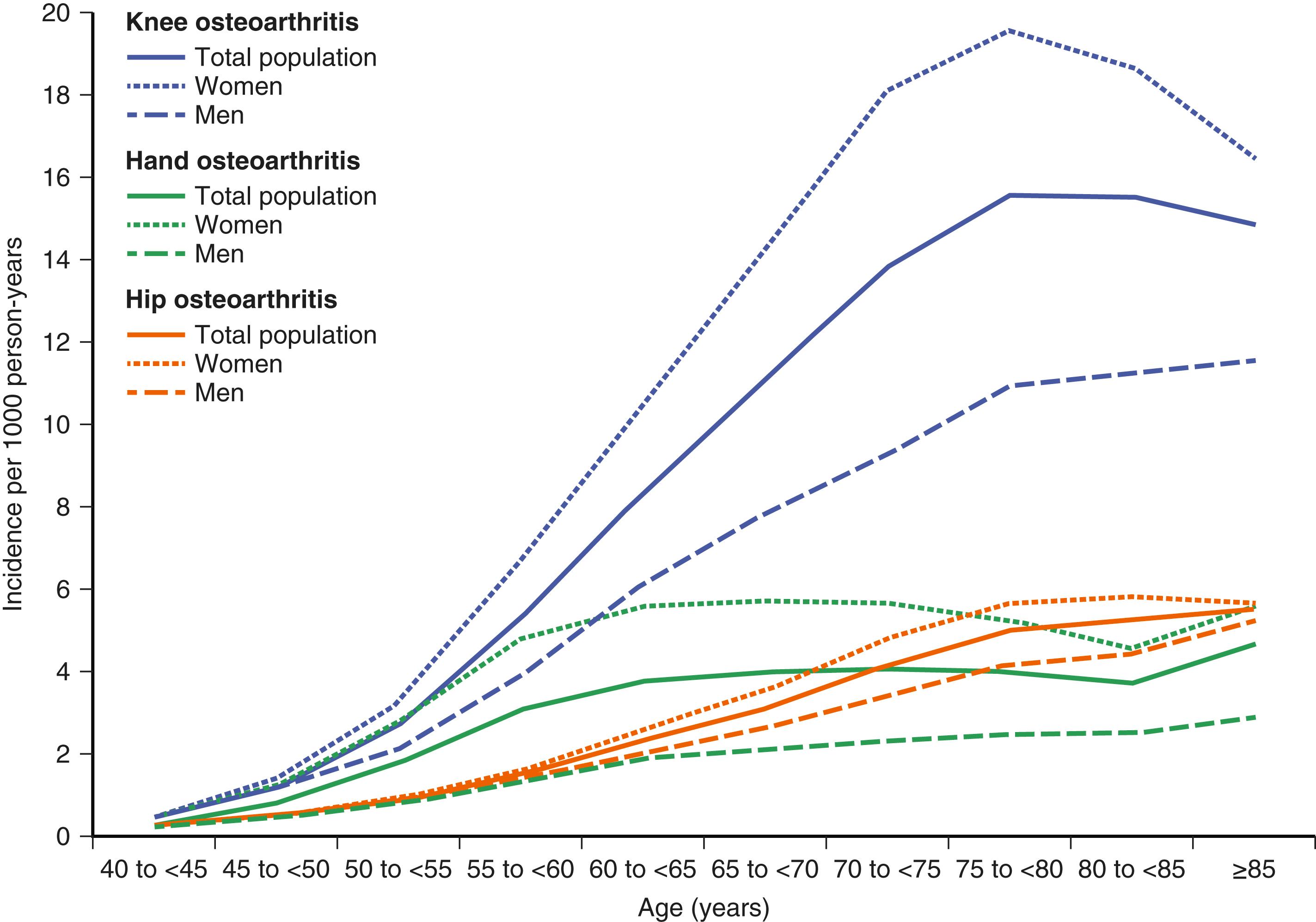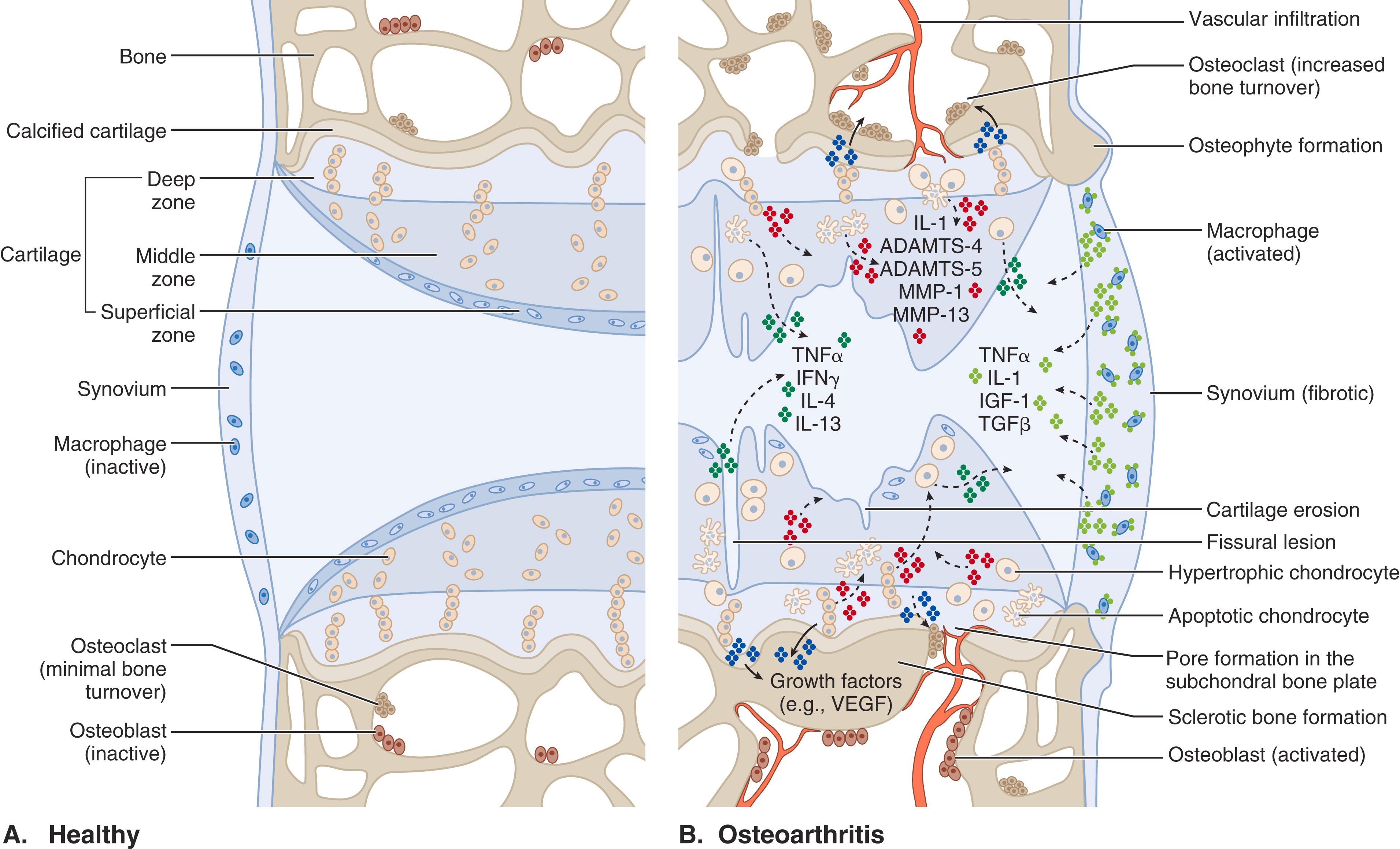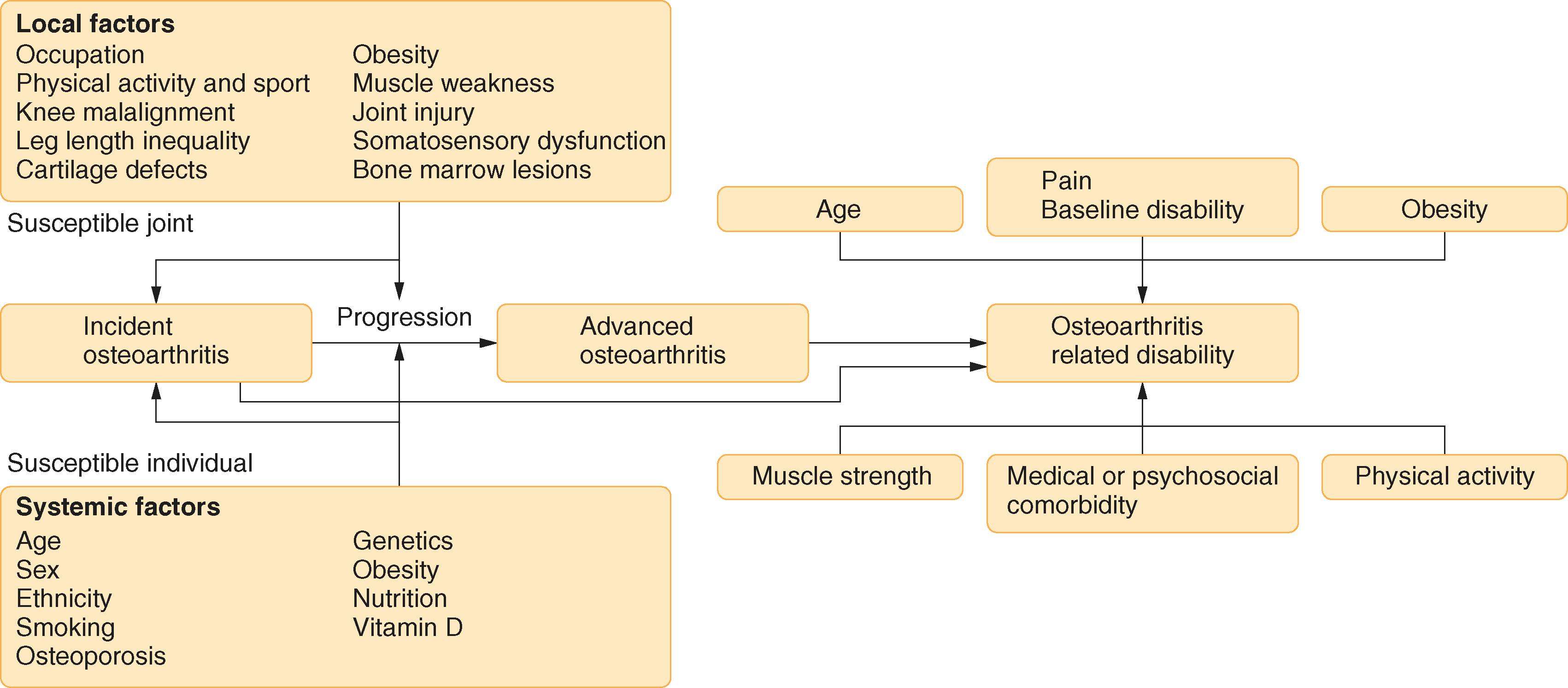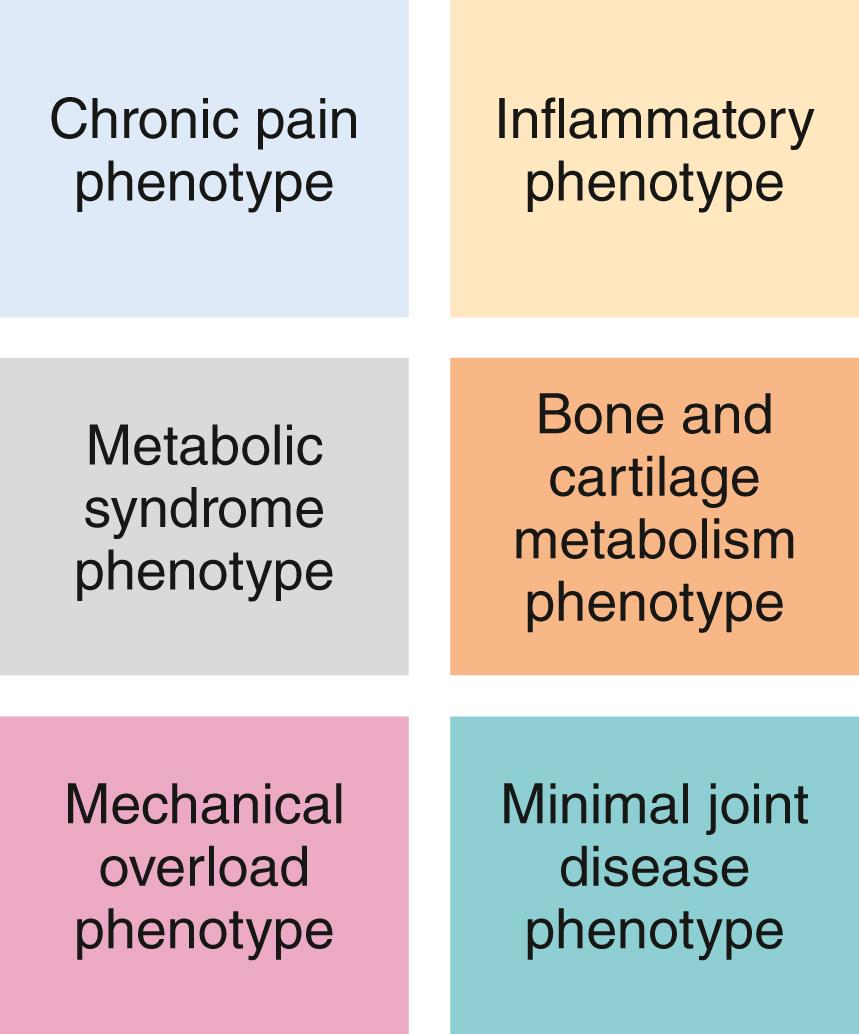Physical Address
304 North Cardinal St.
Dorchester Center, MA 02124
Osteoarthritis is characterized by failed repair of synovial joint tissues after intra-articular stress. The resulting breakdown of cartilage and bone can lead to symptoms of pain, stiffness, and functional disability. However, synovial joint pathology and structural changes on imaging studies may correlate poorly with patient-reported symptoms.
Osteoarthritis is a highly prevalent, disabling disease that affects more than 500 million people worldwide, with women disproportionately affected. The incidence of osteoarthritis increases rapidly between ages 50 and 75 years ( Fig. 241-1 ). The age-standardized incidence and prevalence are also increasing, and an estimated 25% of the total U.S. adult population will have physician-diagnosed osteoarthritis by the year 2040.

In part as a consequence of aging, obesity, and joint injury, the number of people affected by osteoarthritis globally rose by 48% from 1990 to 2019, and osteoarthritis is now the 15th highest cause of years lived with disability worldwide. Of people affected by osteoarthritis, 80% suffer from limitations in movement and 25% have difficulty in performing their major activities of daily living. Osteoarthritis of the knee accounts for approximately 85% of the burden attributable to osteoarthritis. The lifetime risk of having symptomatic knee osteoarthritis is about 40% in men and 47% in women, and the risk increases to 60% among persons above a healthy weight.
Osteoarthritis results in structural alterations in the hyaline articular cartilage, subchondral bone, synovium, ligaments, capsule, and periarticular muscles. This dynamic process involves a range of factors, including a loss of chondrogenic progenitor cells as well as mechanical, inflammatory, and metabolic pathways that create an imbalance between repair and destruction of joint tissues and ultimately lead to failure of the synovial joint.
The pathologic changes of osteoarthritis include alterations in most of the structures of synovial joint tissue. Compositional changes in cartilage (initially proteoglycan attracts water, thereby leading to swelling of articular cartilage and then disruption of the type 2 collagen matrix) alter its material properties and increase its susceptibility to disruption by physical forces. Erosions occur at the cartilage surface, and then deep cartilage fissures are accompanied by the expansion of the calcified cartilage zone. Hypertrophic chondrocytes appear and exhibit increased synthetic activity, thereby reflecting an attempt at repair, and they generate matrix degradation products and proinflammatory mediators that further deregulate chondrocytic function and act on the adjacent synovium to stimulate proliferative and proinflammatory responses. Breakdown products of cartilage and bone evoke a synovial inflammatory response, which becomes both hyperplastic (increased numbers of synovial lining cells) and hypertrophic (small villi or folds developing in the membrane, with infiltration of macrophages, lymphocytes, and plasma cells) and is accompanied by an increase in the vascularity in the subintimal layer.
In the subchondral bone, increased bone turnover and vascular invasion from the subchondral bone damage cartilage. The bone remodeling and repair is also associated with the development of subchondral bone marrow lesions, which are associated with both pain and progressive disease. The evolution of these lesions can lead to the formation of focal necrosis and subchondral cysts. Reactivation of endochondral ossification leads to osteophytes, which develop at the joint margins and are strongly affected by inflammatory biologic factors, overload, and abnormal joint kinematics. Meniscal (myxoid degeneration, tears, and maceration) and ligamentous abnormalities are common, as are periarticular muscle atrophy and weakness.

Mechanical load is the primary risk factor responsible for the development of osteoarthritis when excessive mechanical strain is transmitted through a normal joint (obesity, joint malalignment, occupational risk) or when a normal load traverses a joint that has lost its mechanical protection because of disruption of ligaments, meniscal damage, or muscle weakness). This altered mechanical load induces activation of inflammatory signaling pathways to drive the process of joint breakdown ( E-Fig. 241-1 ). This inflammation occurs locally within the tissues, including cartilage and subchondral bone, with synovitis and osteophytes. The process is frequently driven systemically by obesity-related inflammation.
For most persons affected by osteoarthritis, its development can be linked to multiple risk factors that can be grouped either into local/systemic risk factors, which may be modifiable or nonmodifiable ( Fig. 241-2 ). Potentially modifiable risk factors include increased body weight, joint malalignment, muscle weakness, a sedentary lifestyle, occupational exposure, and athletic injuries. In contrast, nonmodifiable risk factors include age, ethnicity, genetics, prior injury, and sex.

The genetic contribution to osteoarthritis varies by joint and is stronger for the hand than for the knee. Except for monogenetic disorders such as chondrodysplasia, the genetic contribution to osteoarthritis is polygenic, and over 100 polymorphic DNA variants with small effects have been identified to date. These genetic variants account for over 20% of the heritability of osteoarthritis and largely map to non-protein coding regions of the genome that might regulate expression of target genes. These targets include extracellular signaling molecules, intracellular enzymes, transcription factors, and cytoskeletal proteins. A number of these risk variants relate to epigenetic factors, in particular DNA methylation, whereas other variants appear to have been selected as humans adapted to bipedalism.
Osteoarthritis is an umbrella diagnosis referring to a multifaceted and heterogeneous syndrome rather than one single disease. The commonly described identifiable predisposing factors for most forms of osteoarthritis include hormonal changes (e.g., estrogen deficiency), metabolic syndrome, post-traumatic injury, mechanical overload, inflammatory responses, genetic predisposition, and aging ( E-Fig. 241-2 ).

Become a Clinical Tree membership for Full access and enjoy Unlimited articles
If you are a member. Log in here